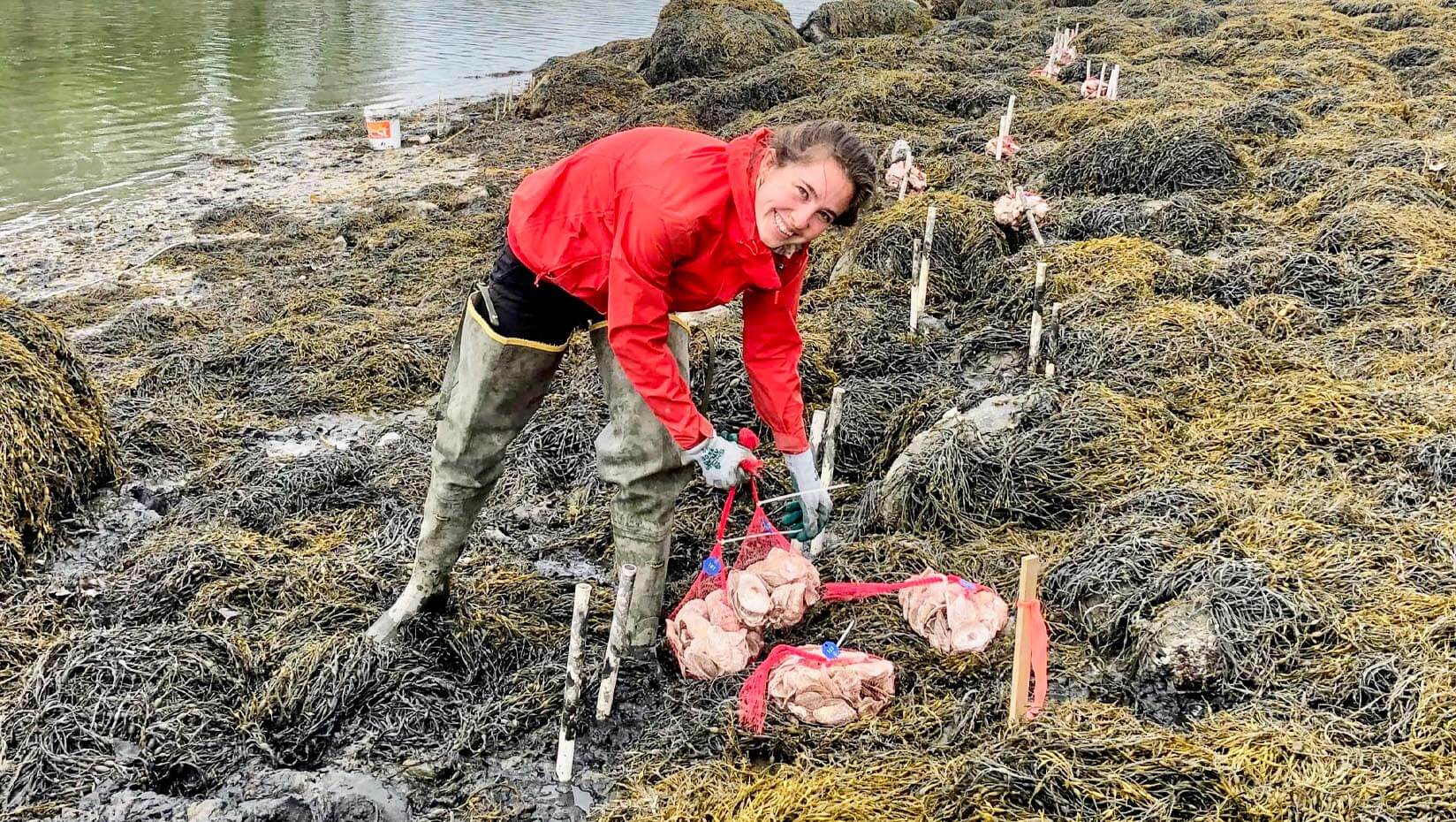
Darling Marine Center documents local shellfish harvesting trends, changes
By studying the Damariscotta and Medomak River estuaries, University of Maine researchers have formally documented shifts in shellfish populations, from soft shell clams to oysters. Because Maine’s intertidal mudflats, such as those found in these estuaries, are difficult to study, this work filled an important gap in information about shellfish harvesting.
Research documented how tidal river ecosystems have changed over time and how local shellfish harvesters and other estuary users have adapted. This was the first time the knowledge of harvesters and experts working within these estuaries was documented, and findings have expanded the information available to communities who steward shellfish in Maine and beyond.
Graduate student Sarah Risley of the UMaine Darling Marine Center (DMC) led the study, published in the international scientific journal Ambio. Co-authors include Melissa Britsch, formerly of UMaine and now with the Maine Coastal Program of the Maine Department of Marine Resources, associate professor of marine policy Joshua Stoll and professor of marine sciences Heather Leslie, both of the School of Marine Sciences.
“This was an incredible opportunity to learn about Maine’s intertidal ecosystems. I’m deeply grateful to everyone who shared their time and expertise,” said Risley, a resident of Wiscasset.
The team found that the availability of harvested species such as soft shell clams and American oysters differed among the two estuaries, and populations of soft shell clams have shifted dramatically over time. Commercial shellfish harvesters estimate that the soft shell clam population has declined by up to 90% in the upper Damariscotta River estuary.
While this information is well known among those who have spent decades on the water, the team’s work documents and expands that knowledge to the broader community. Municipal leaders in the towns of Bremen, Damariscotta and Newcastle helped guide the study. Members of the Joint Shellfish Conservation Committee of Damariscotta and Newcastle have used related findings to support management of shellfish fisheries in the upper Damariscotta River.
“The community science collaboration in the Damariscotta estuary highlights the value of documenting local knowledge,” said Leslie, who is also based at the DMC and serves as Risley’s primary advisor. “All of the research we’ve done over the last six years has been grounded in the local knowledge shared by shellfish harvesters and other local experts.”
Risley and Leslie are continuing this collaboration with the shellfish committee, Lincoln Academy and other community partners through the establishment of the Damariscotta River Estuary Community Science Program.
“We appreciate the Darling Center’s leadership in this collaboration and look forward to continuing to work with students from both UMaine and Lincoln Academy,” said Andrew Dorr, Damariscotta town manager.
The study was funded by National Oceanic and Atmospheric Association’s Saltonstall-Kennedy Grant Program with additional support from the Broad Reach Fund and DMC’s local donors.
To learn more about Damariscotta’s community science program, contact Leslie by emailing heather.leslie@maine.edu or calling 207.563.8115.
Contact: Ashley Yates; ashley.depew@maine.edu
